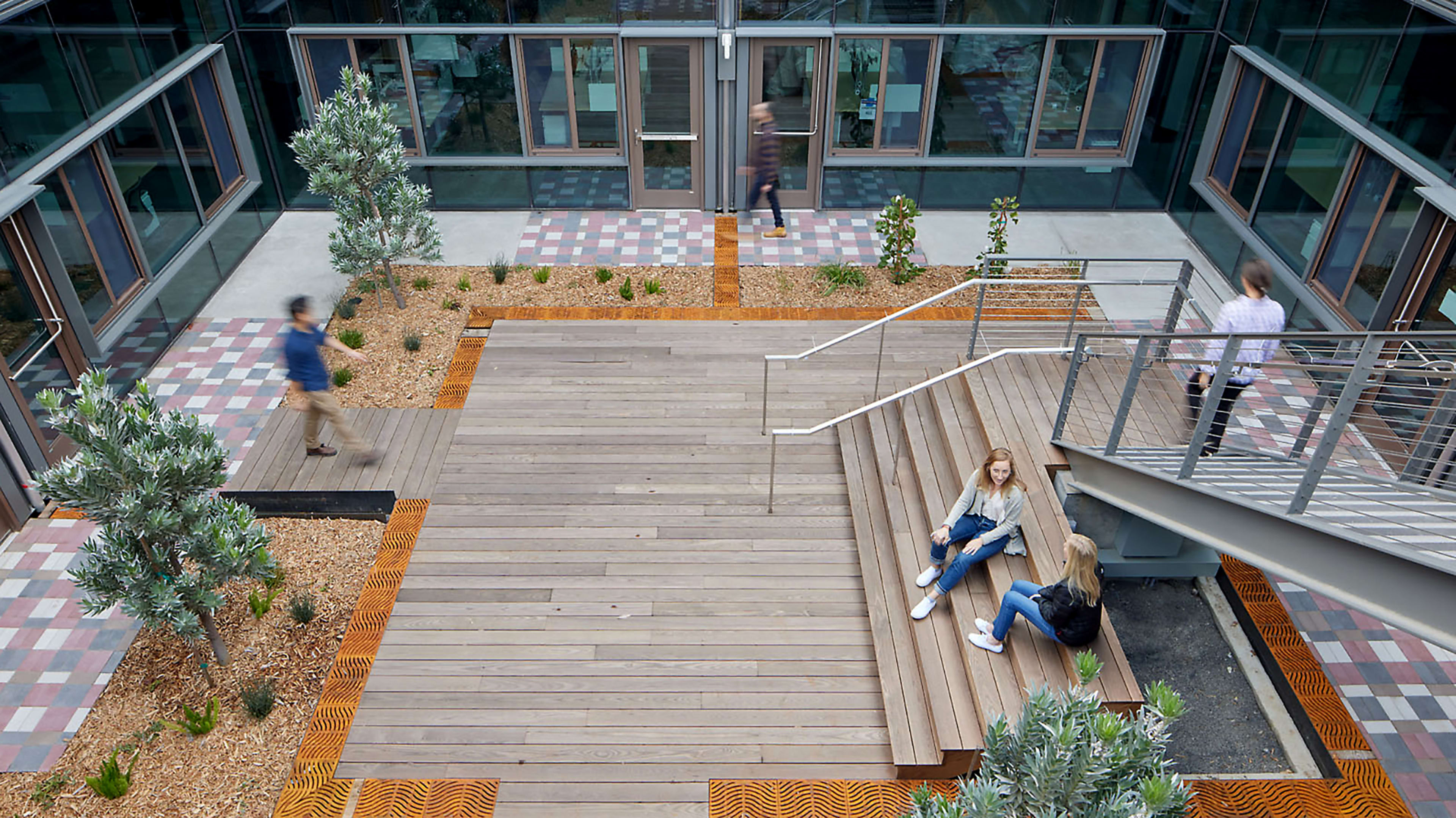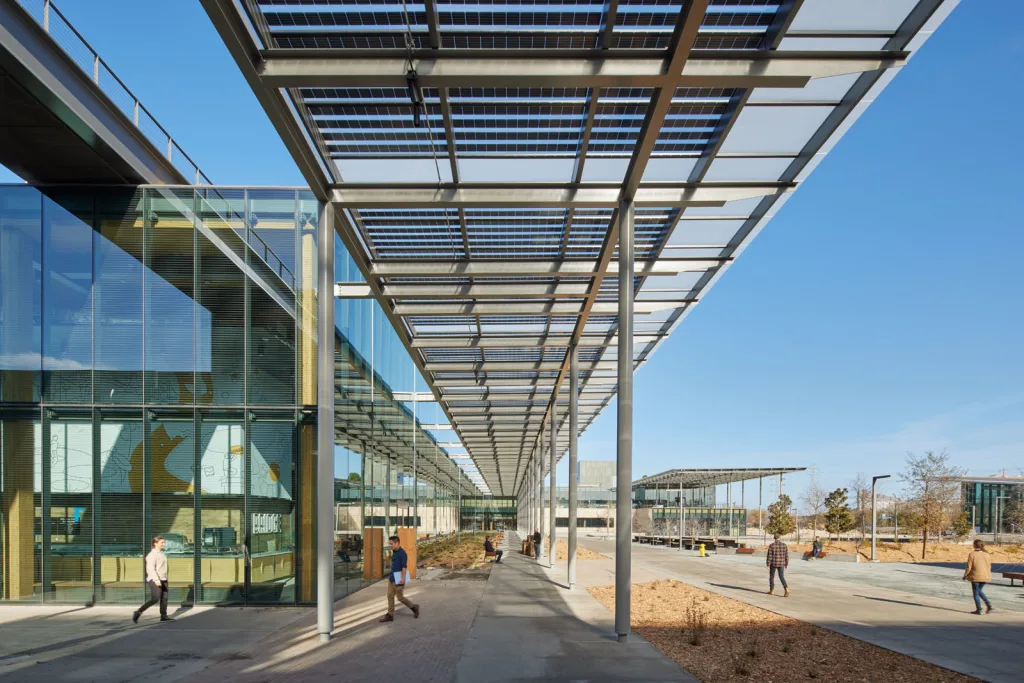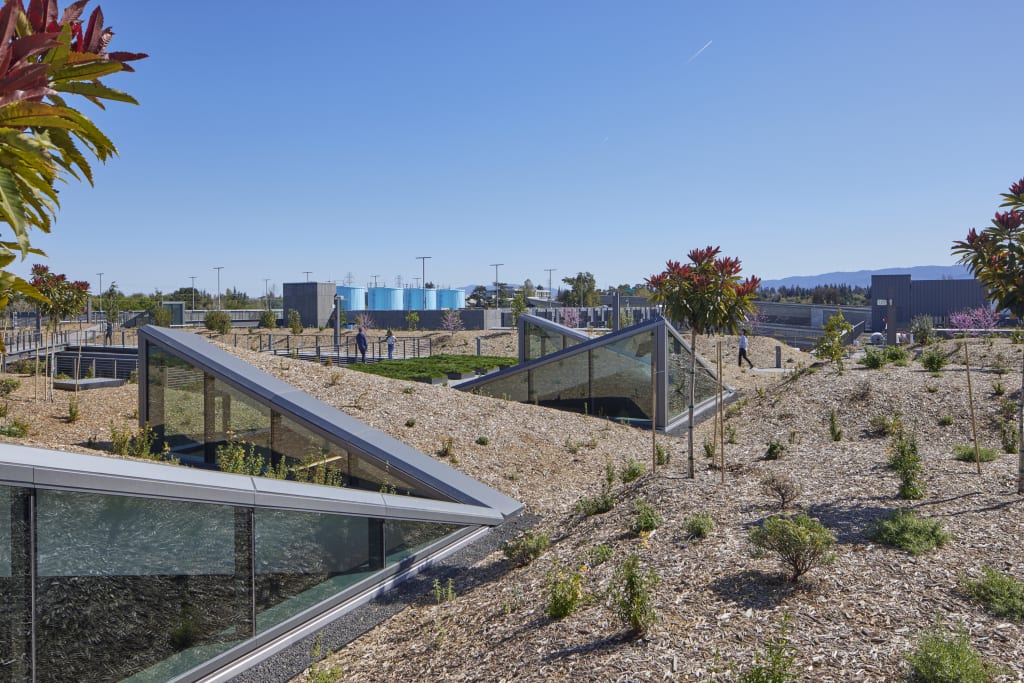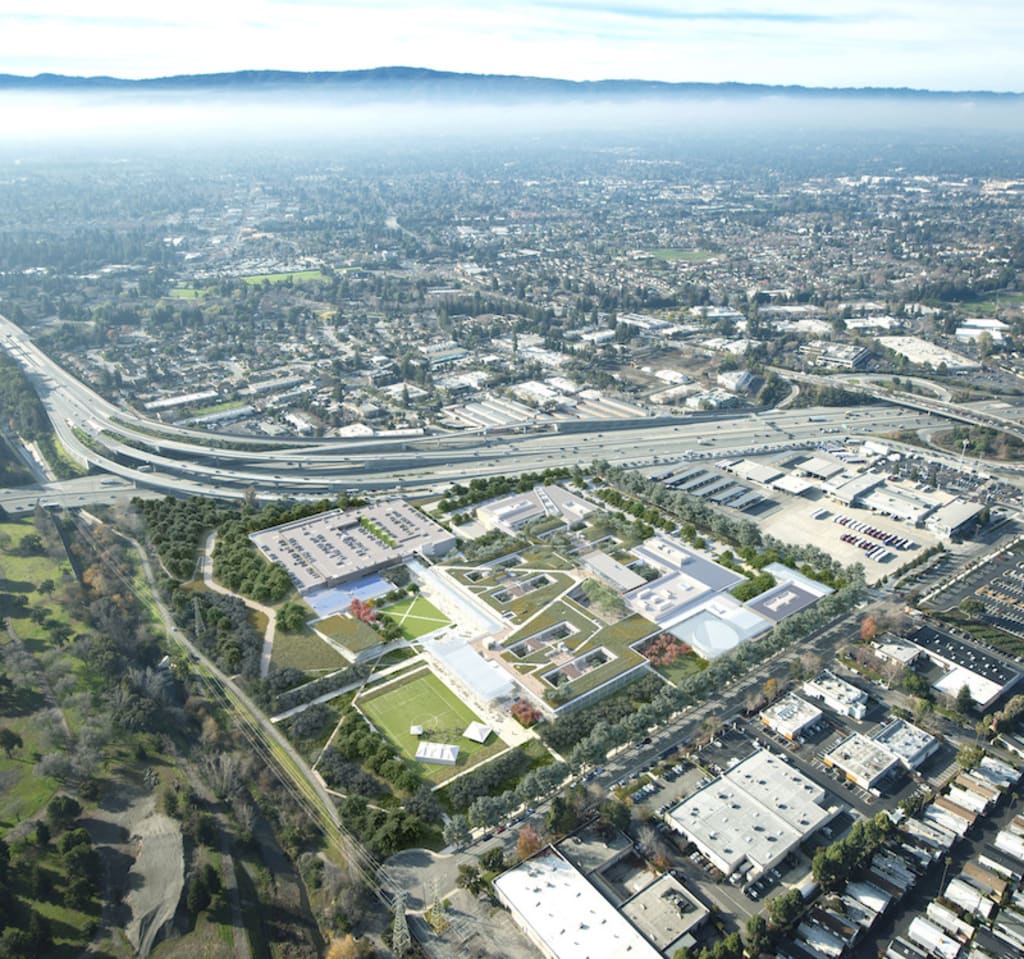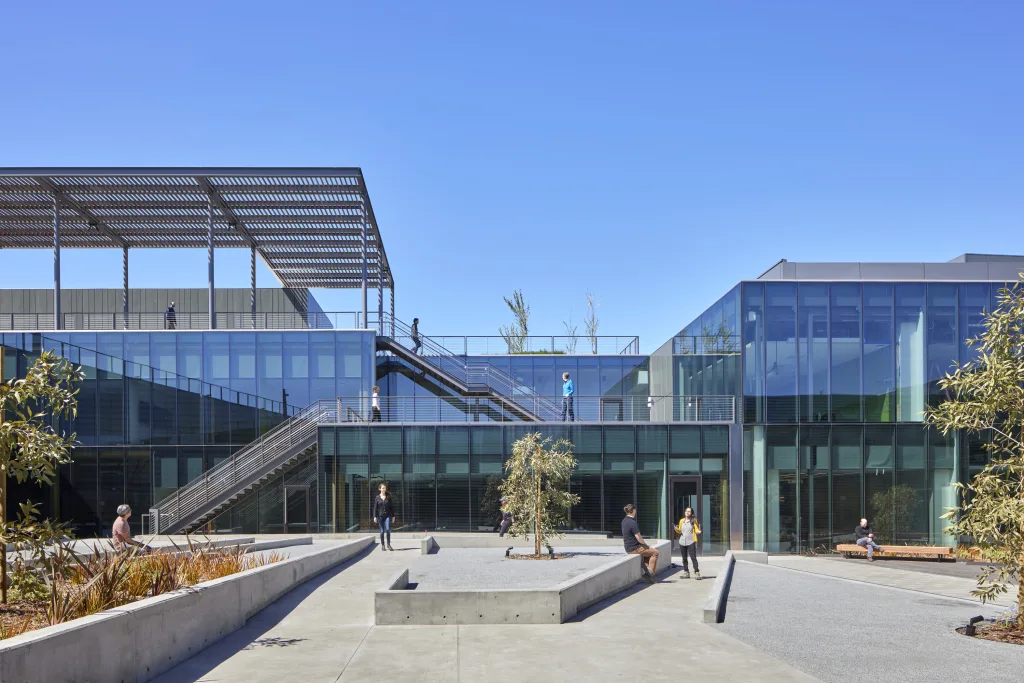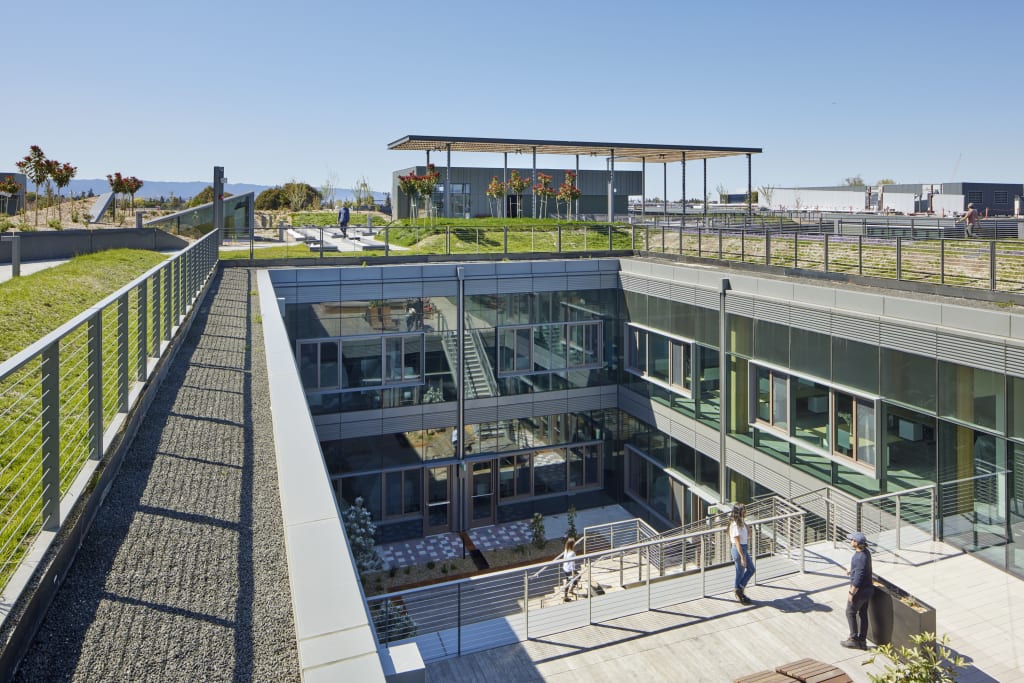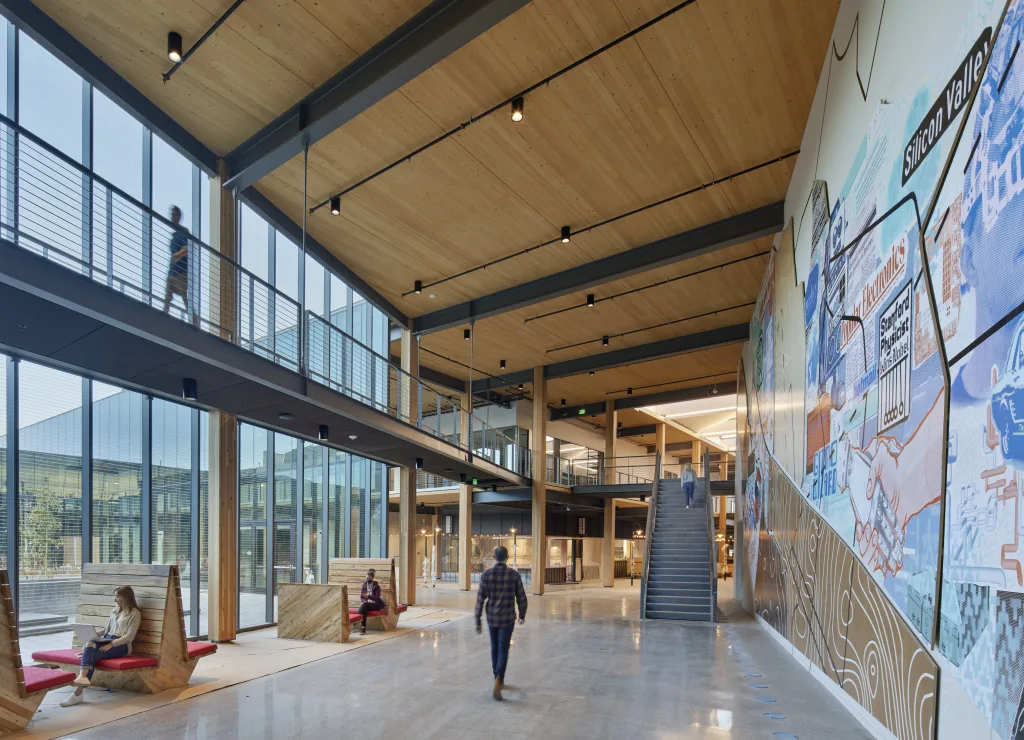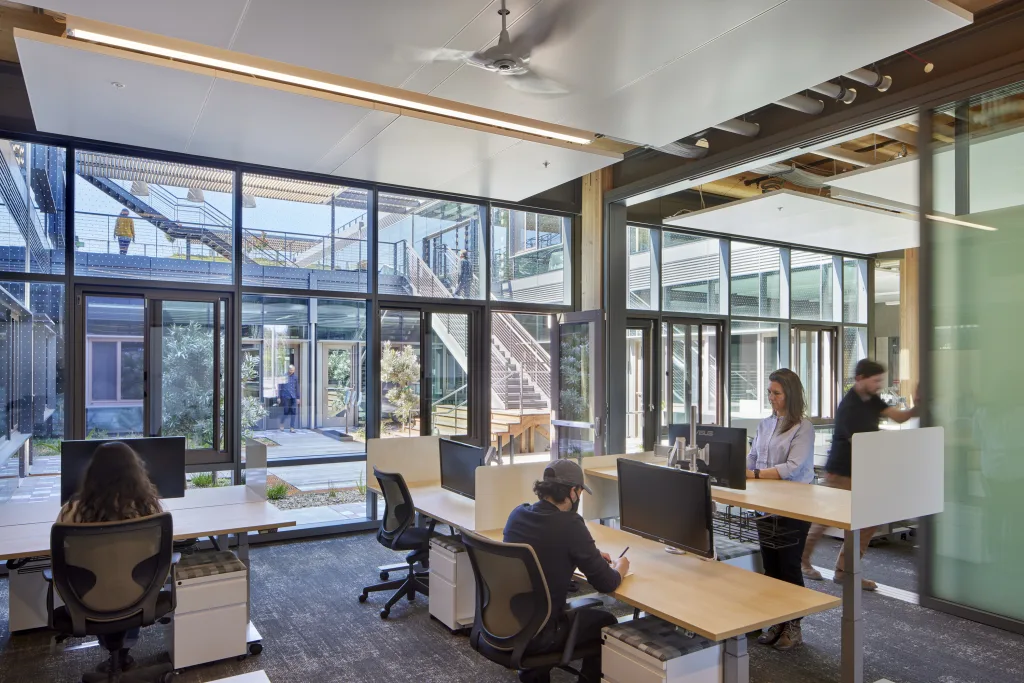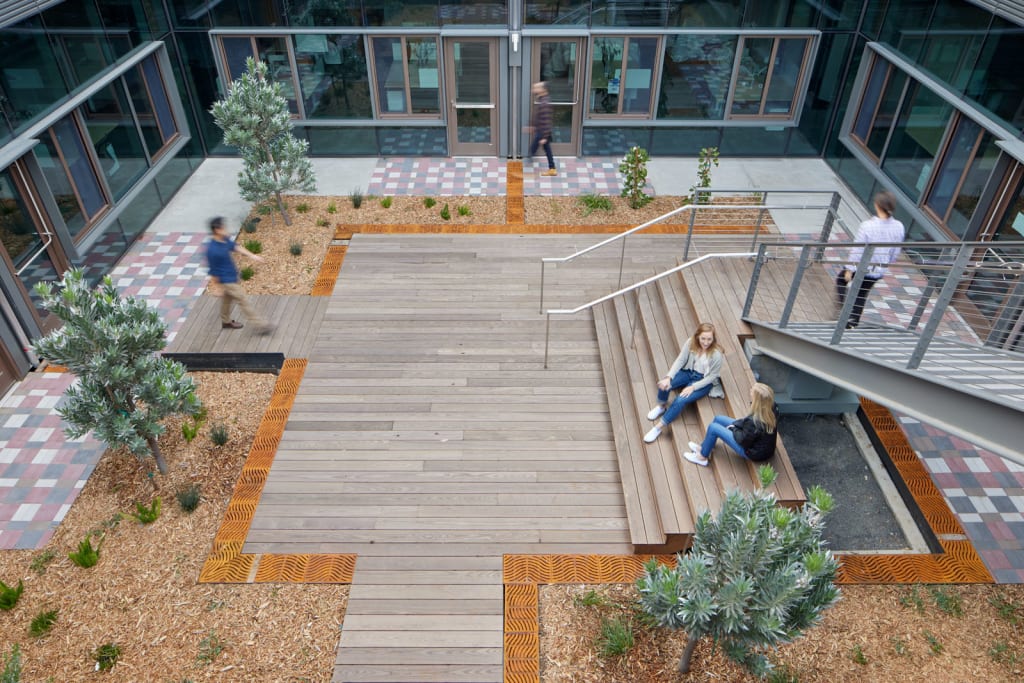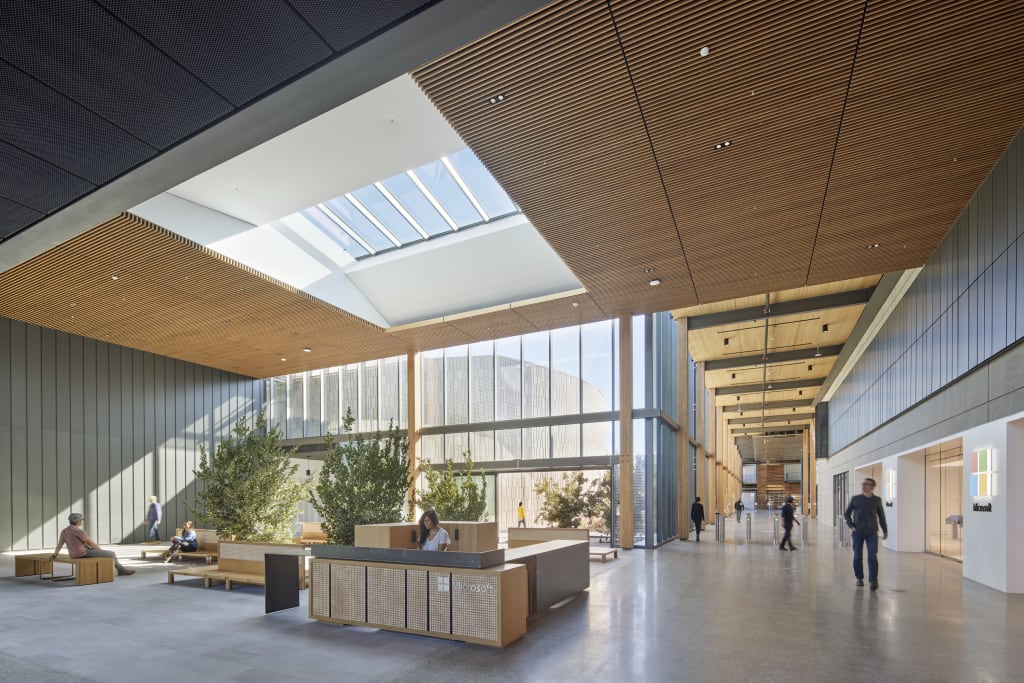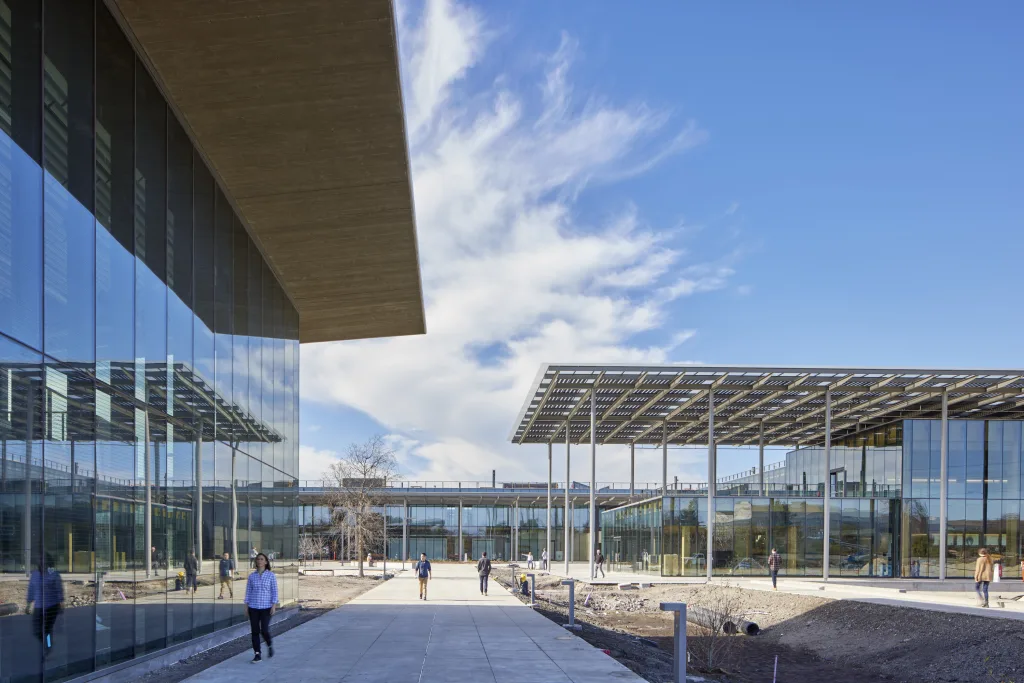At Microsoft’s Silicon Valley office complex, each desk is no more than 25 feet from nature. Some employees might walk a few feet to step out a door into a courtyard; others might walk out onto a three-acre living roof planted with native flowers designed to bring back butterflies and hummingbirds that were once more commonly found in the area.
It’s one way that the campus—once a fairly typical set of corporate buildings in Mountain View, California—has been redesigned both to be healthier for workers and better for the surrounding environment. “Everything on the site is interconnected,” says Sam Nunes, a founding partner at WRNS Studio, the design firm that reimagined the offices. “People, water, energy, ecosystem, all of it comes together, and amplifies the most good for all of those considerations.”
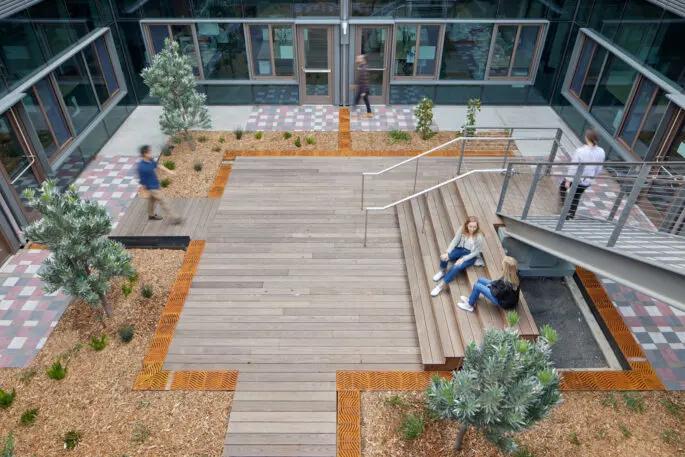
Two of the original buildings on the site were retained, but are now surrounded by a massive building made from cross-laminated timber. The wood came from diseased and dying trees in the Pacific Northwest that posed a fire hazard and that also needed to be removed to help slow the spread of beetles that are decimating forests; using wood helped lower the carbon footprint of the construction.
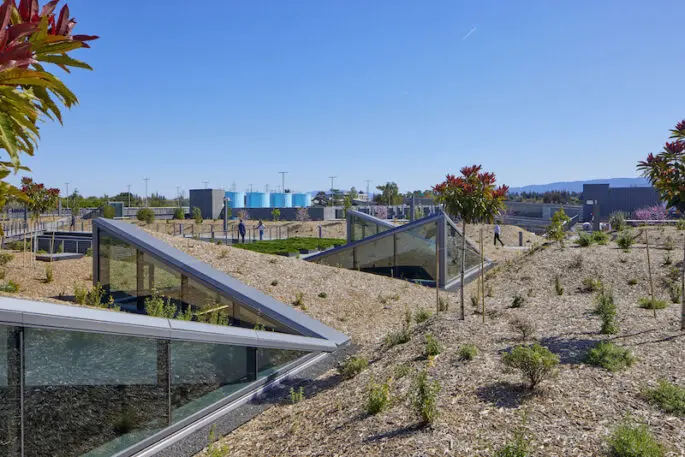
The biggest part of the office’s remaining emissions might be the way that people get to work: While the company is still encouraging remote work because of the pandemic, as people eventually return to the office, most will drive. That’s despite the fact that the heart of Silicon Valley is flat, as opposed to hilly San Francisco, and the weather is sunny the majority of the year, making it ideal for biking. A bike path runs by the creek next to Microsoft’s campus, but the challenge for many commuters is the rest of the car-centric region; six years ago, Google started advocating for a comprehensive network of bike lanes in the area to help lower its own carbon footprint.
The City of Mountain View also wants to increase bike commuting, though progress is slow. Microsoft’s renovated office has 70 electric car chargers, and room to add more, though if every employee arrives in an electric car, it won’t help the Bay Area’s traffic congestion. For Microsoft, and other large employers in the area, a better answer might be letting more people work remotely permanently—and putting more weight behind better bike infrastructure.
Recognize your brand’s excellence by applying to this year’s Brands That Matter Awards before the early-rate deadline, May 3.
